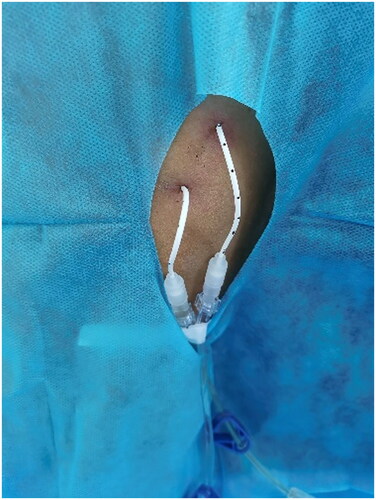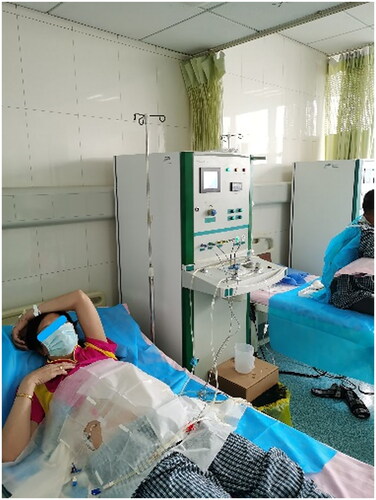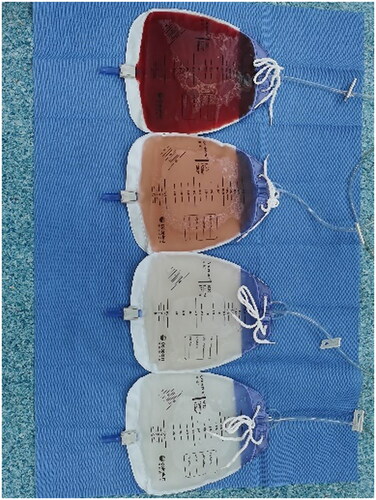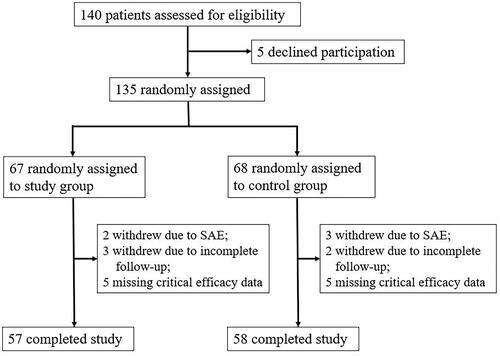Figures & data
Figure 1. An example image of established inlet and outlet ports on a patient’s back. After local anesthesia, two drainage tubes were inserted into the thoracic cavity through puncture technique under the guidance of ultrasound, which were designated as Inlet and Outlet ports for the hyperthermic perfusion and circulation.

Figure 2. An example of bedside application of the perfusion device in a patient with malignant ascites. A perfusion device was connected to the patient, and hyperthermic perfusion and chemotherapy with cisplatin was performed for one hour.

Figure 3. An example image of lavage fluid changing from bloody effusion fluid into clear saline through the process of effusion replacement. Prior to the initialization of hyperthermic perfusion and circulation with chemotherapeutic drug, lavage was performed using the HIPEC machine and normal saline following the manufacturer’s instruction. Note the color changes of the lavage fluid from bloody to clear water.

Table 1. Demographic characteristics of the Participants.
Table 2. Comparison of objective response rate between the two groups (n, %).
Table 3. Comparison of objective response rate among various types of primary tumors (n, %).
Table 4. Comparison of quality-of-life scores between the two groups (±s).
Table 5. Comparison of adverse events between the two groups (n, %).
Data availability statement
The data that support the findings of this study are openly available.

